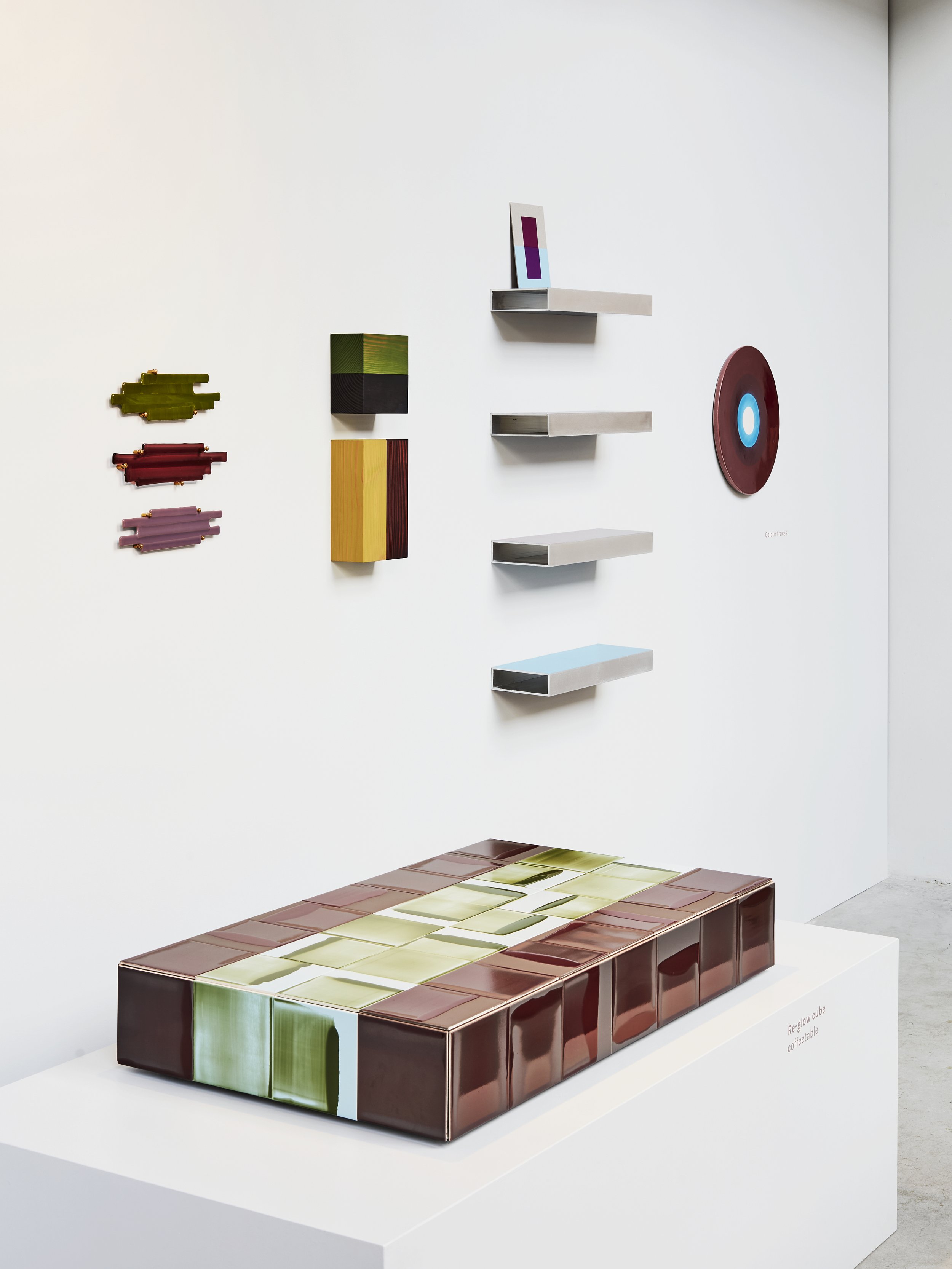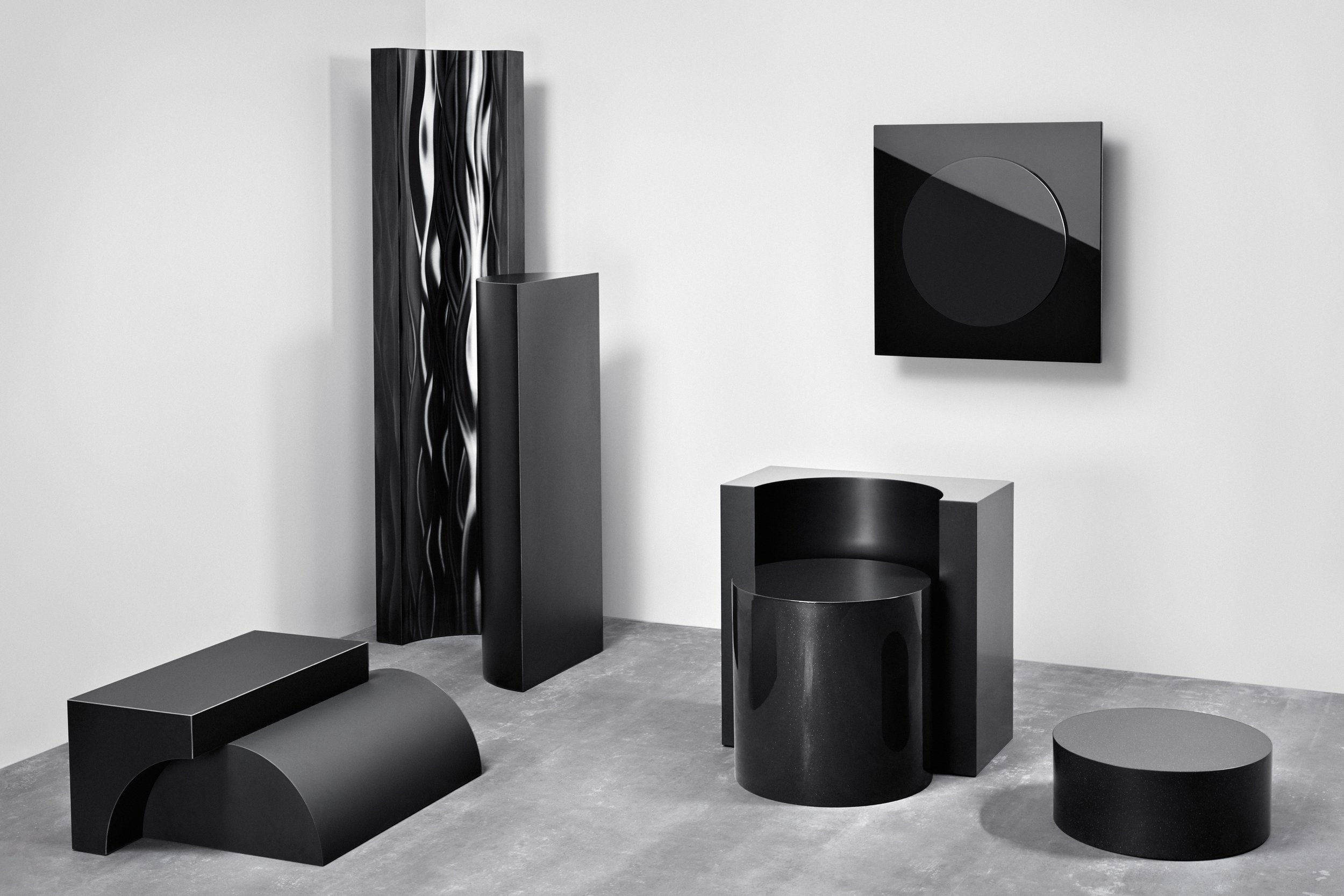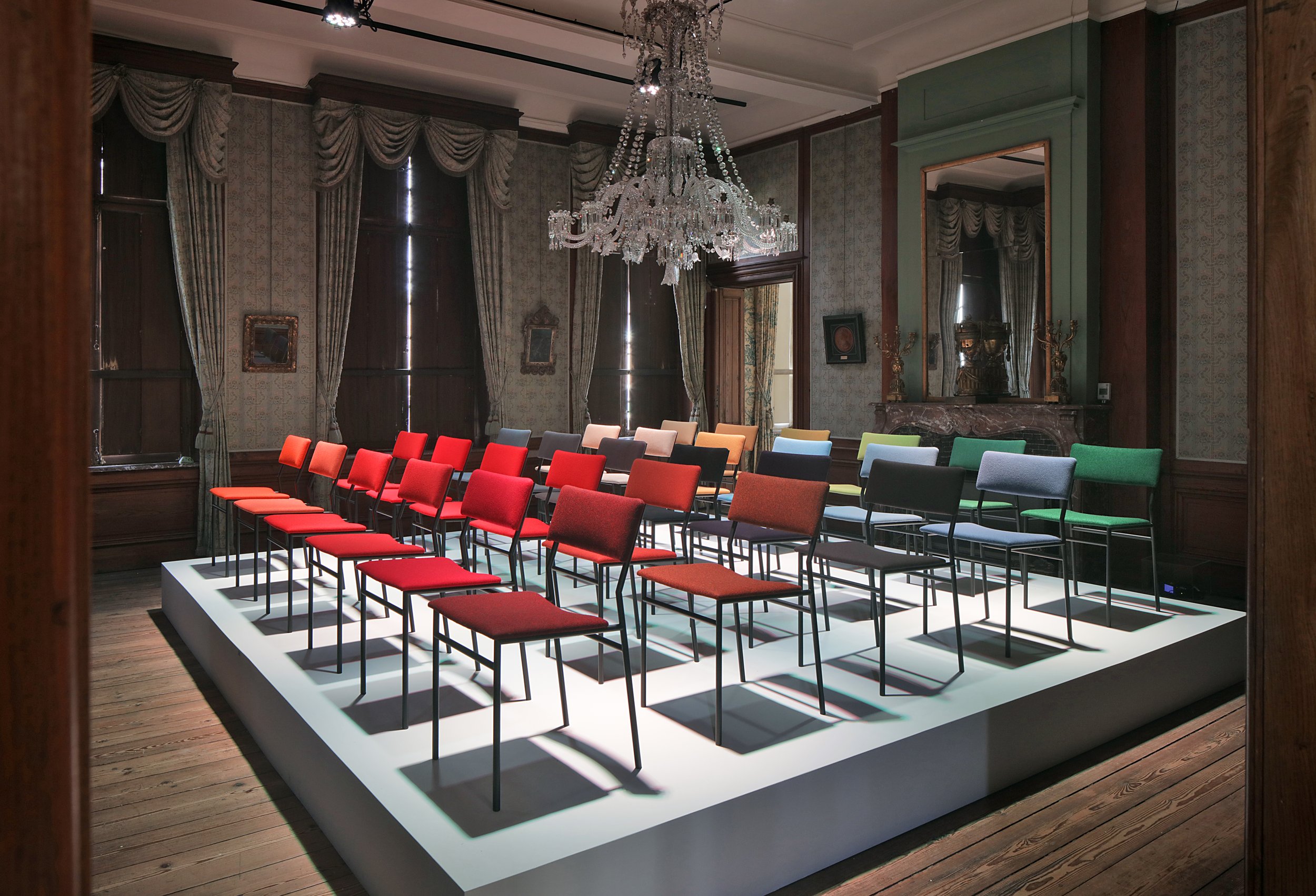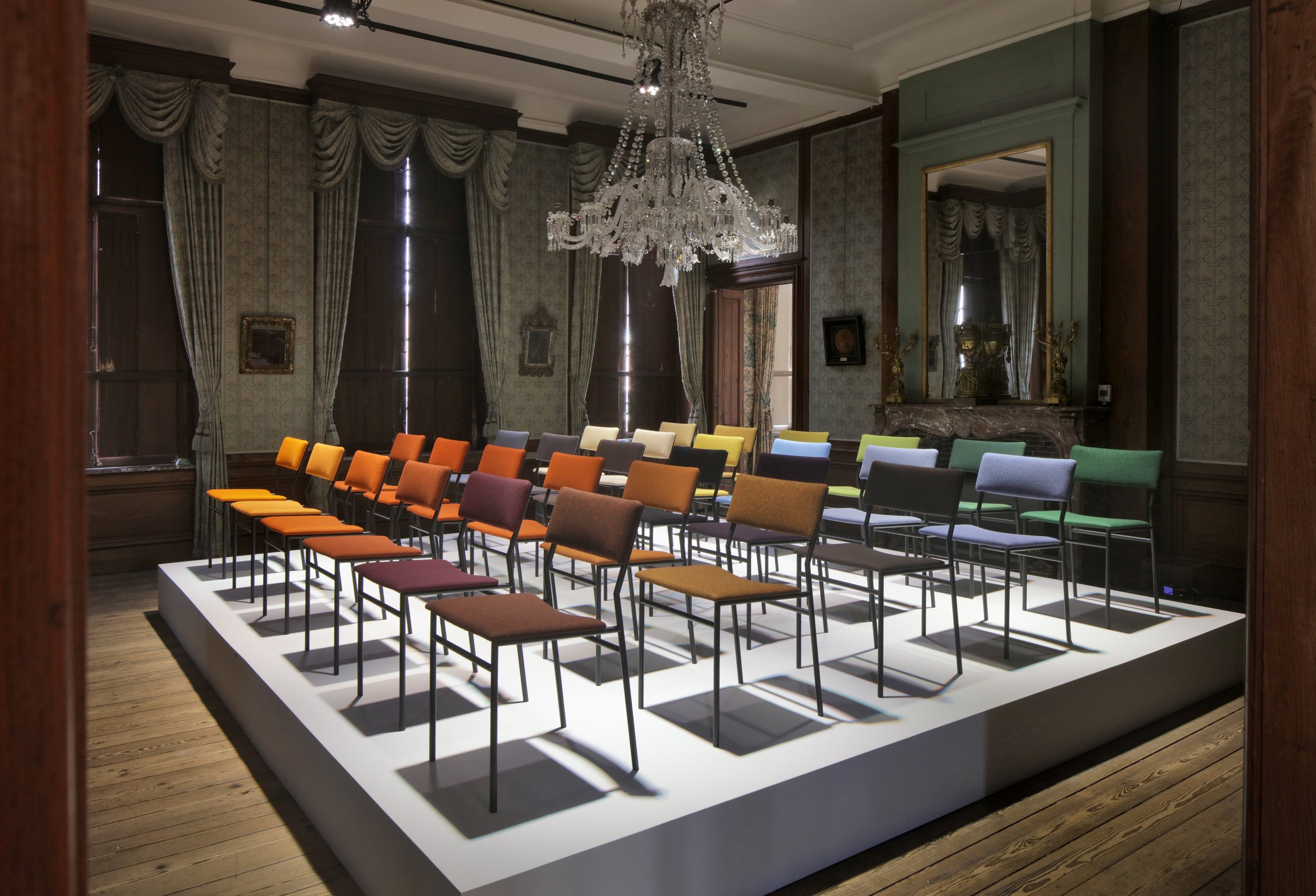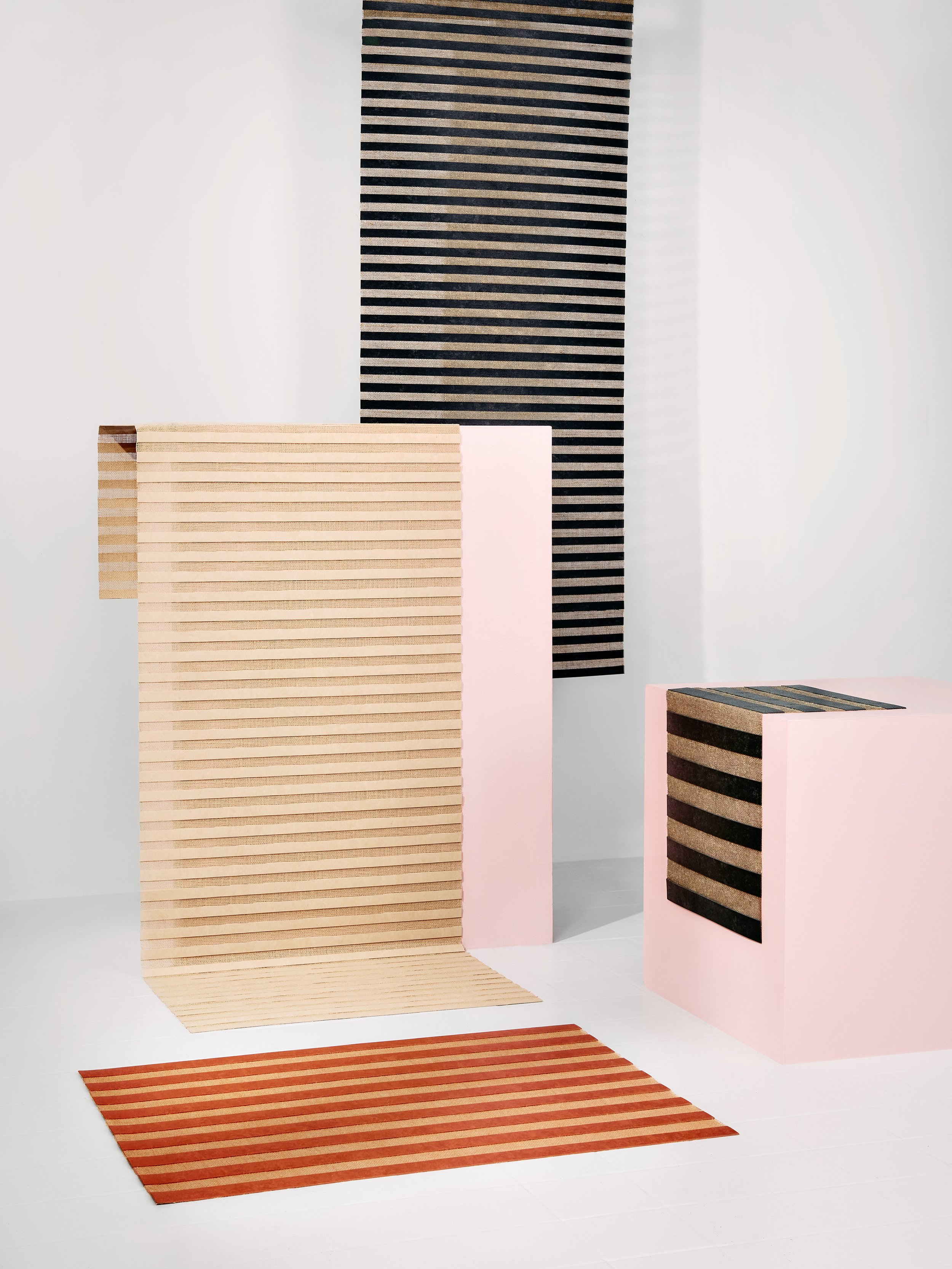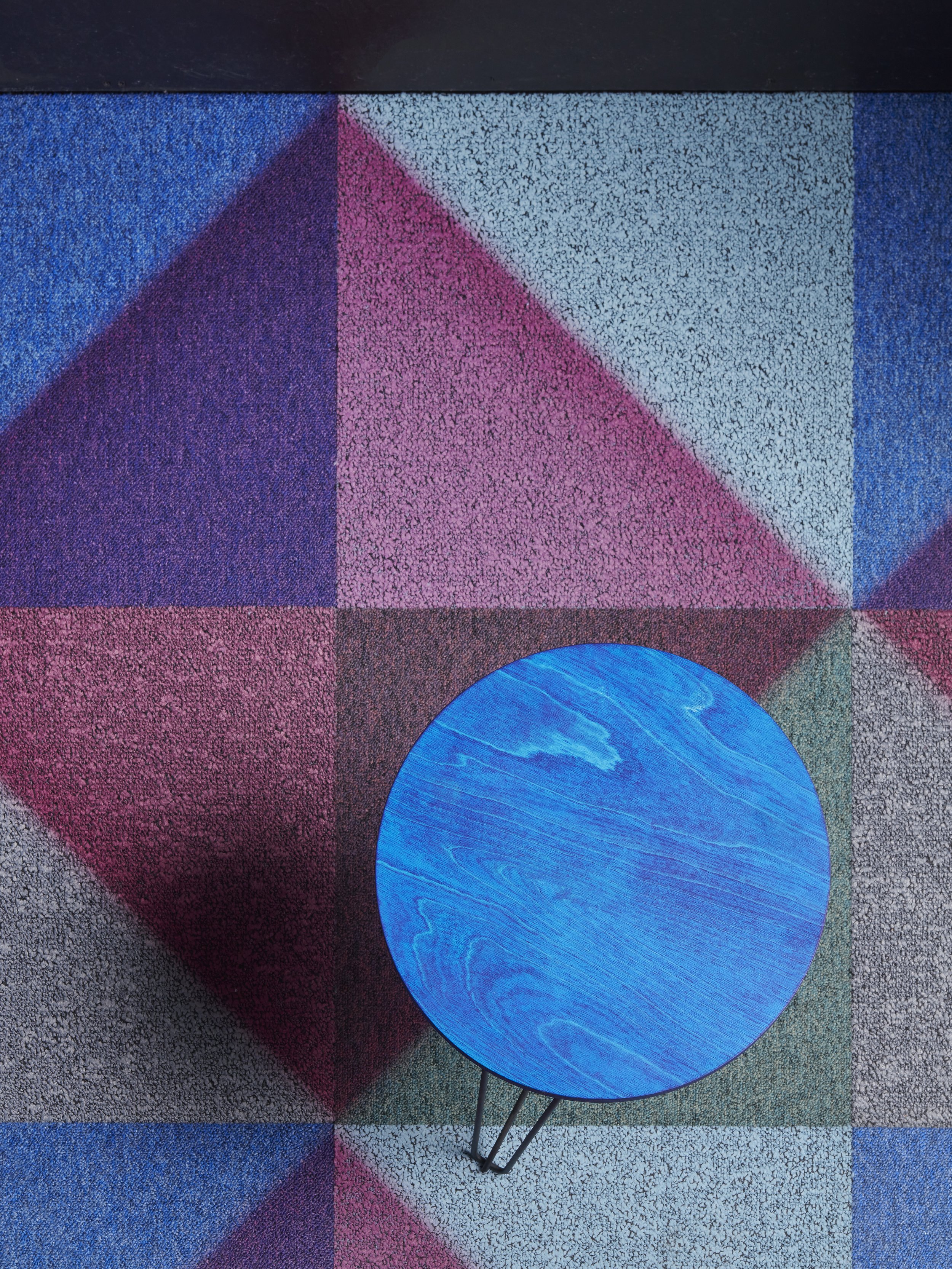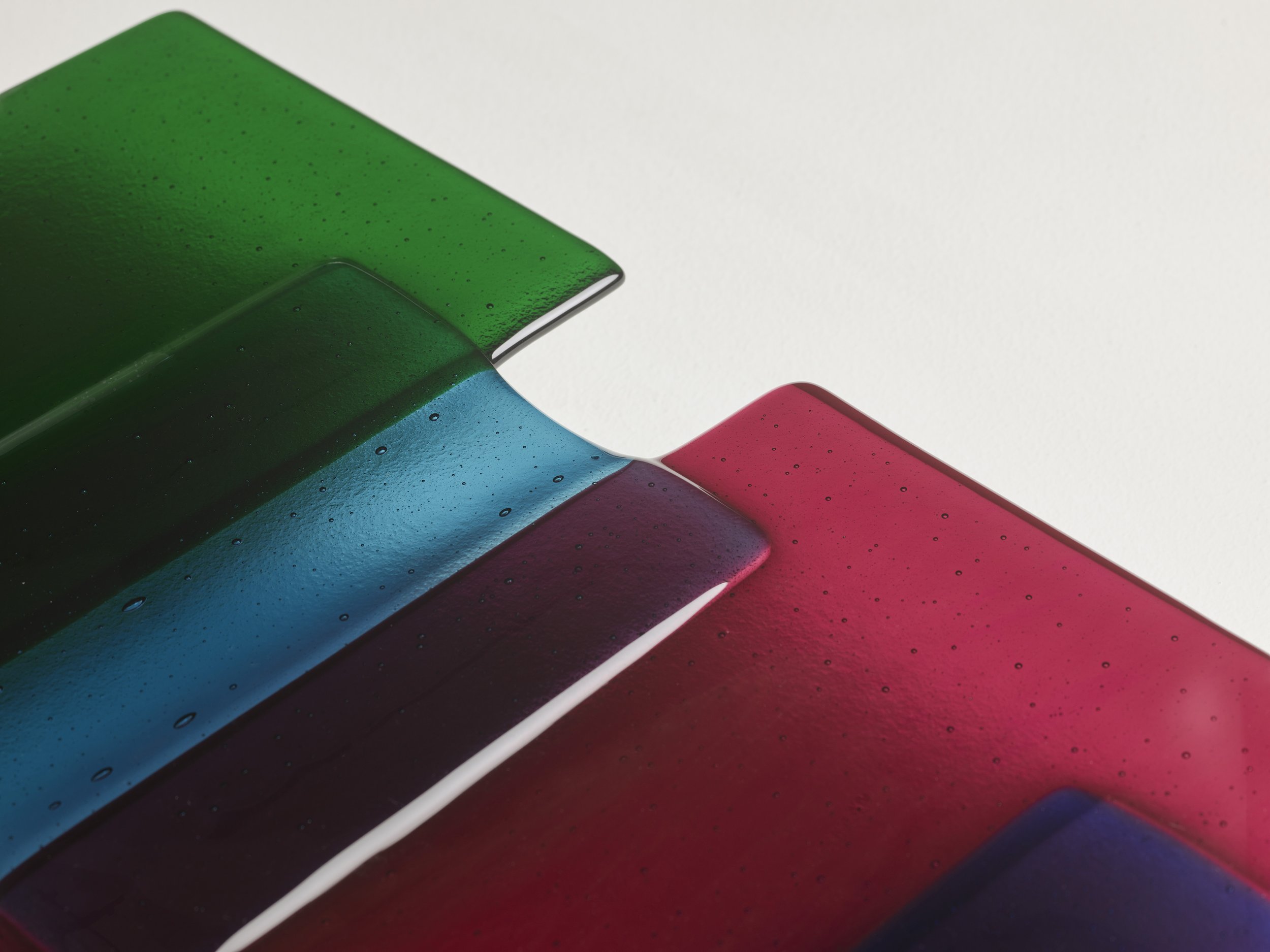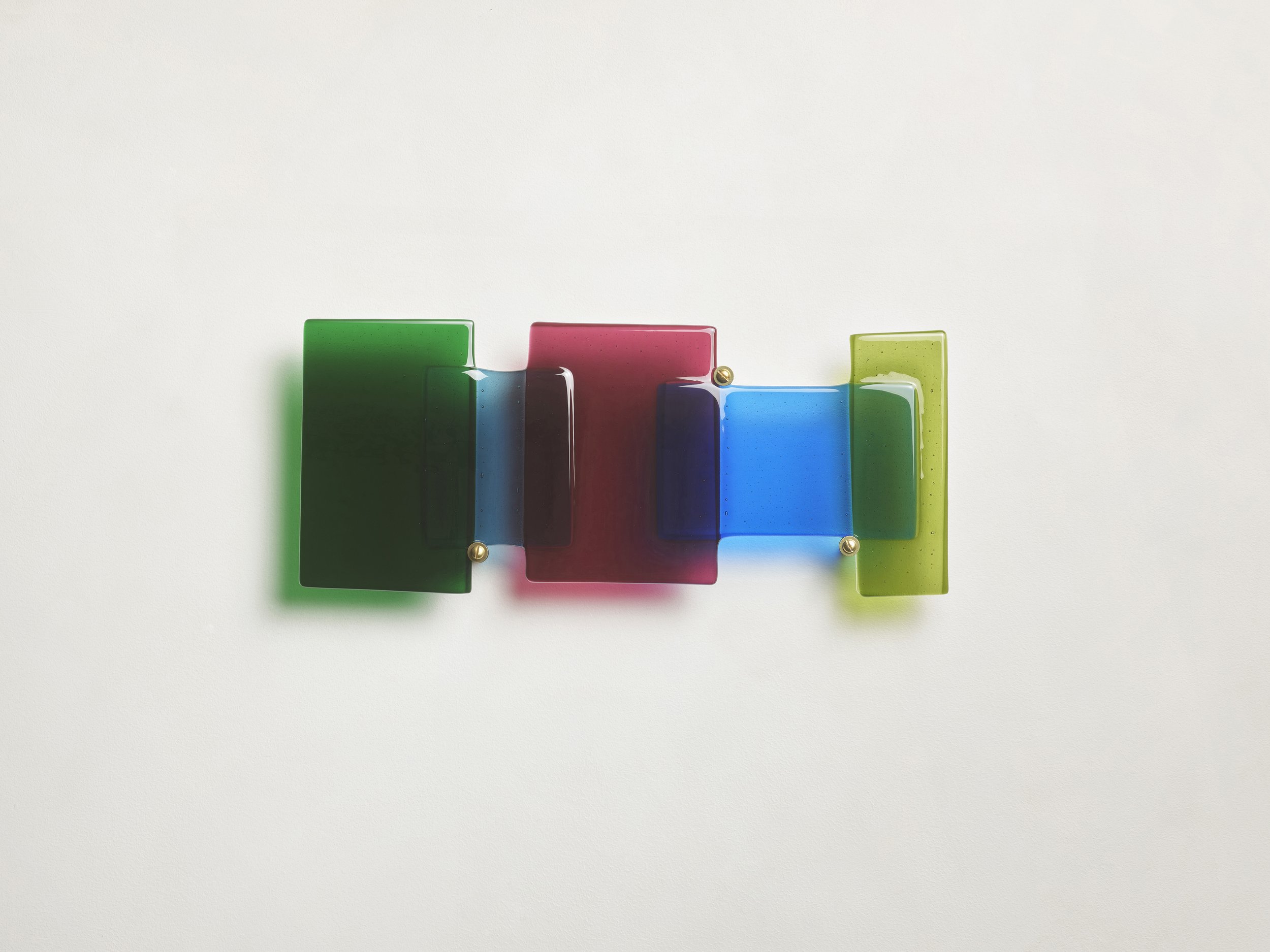Interview with Studio RENS
Nestled in the post-industrial labyrinth that is the former Philips factory on the Strijp-R business park in Eindhoven, are an array of workshop facilities and studios. The Philips DNA of design innovation has seemingly infused itself into the fabric of the buildings, with the likes of Piet Hein Eek having set up a base back in 2010. He has since established a factory complex of his own, equipped with fully operational workshops that are visible from the surrounding cafes and shops, and visitors flock to the site all year round; not least during Dutch Design Week.
Studio RENS also call the site home and their beautiful studio-cum-gallery, with its factory windows, tall ceiling and mezzanine levels, is always worth a visit during the event. Inside, a clean, minimal aesthetic merges with the remaining signs of former industry to showcase material-driven research and colourful creations galore. Consisting of design duo Renee Mennen and Stefanie van Keijsteren, the studio was formed in 2008 following their graduation from Spatial and Product Design at AKV St. Joost in Breda, the Netherlands. Over the past 15 years, they have built a reputation as outliers in the world of design, seemingly effortlessly straddling the fields of art direction, product design and consultancy with a consistently fresh take that somehow still conveys a signature style.
Materiality, and with it, colour are a constant, and their often forensic yet playful approach to research has fuelled an array of self-initiated as well as commissioned projects. Beautiful outcomes in the form of interior products, spaces and collections of materials tend to follow, but the true joy of their work lies in its overtly inquisitive nature. I caught up with them post-show to discover more about their process and how they approach the many varied forms of project seen in their extensive portfolio.
JB: The interplay between colour and materials seems integral to all the work you’ve ever produced – even the Black series made for Baars & Bloemhoff, where the uniformity of the colour allowed the qualities of the 9 materials used to come to the fore. Does one precede the other, or is there always a coming together of materiality and colour?
SR: I think for us materiality and colour go hand in hand. We are fascinated by the connection between the two elements. It’s impossible to see colour separately without the influence of the material, but also, the influence of light and space. We believe colour is always in movement. The industry is always trying to catch colour with colour systems (think about the likes of Pantone and RAL) but all the while, every colour can appear different depending on the place or environment it is located in, and we are fascinated by that. You can never catch the “real” colour, which then begs the question as to whether there is there a real colour in the first place.
For example, we made an installation for The Design Museum Gent where we showed the influence of light on colour. There were chairs in different fabrics, while the light switched between two different white lights. What we found was that some colours totally changed by switching the light and we asked the visitors what they thought the real colour was, which showed variation. We believe there can’t be a true colour because there is no neutral light. For instance, the intensity of the sun is always different, and not only the sun; every light is always different.
JB: There is an Anni and Josef Albers sensitivity to how you select, position and handle colour in your work, but do you draw influence from anywhere else? Are there certain palettes or combinations that you find you gravitate towards?
SR: We don’t have favourite colours, and in fact, we also don’t believe in this notion. We think every colour can be beautiful in its own way, it all depends on the context, what type of surface, and also, the connection with other colours. A colour never stands alone, and we don’t use a method or colour system. How we use colour, or how we choose colour, is always related to the story or background of a material.
The way we use and/or choose colour always depends on what the concept of the project is about. We often create frameworks that we use as guidelines for our research. Sometimes the colour/s are already chosen and from there on we have the freedom to experiment with them. For us, it’s important that the story or concept continues in everything, including the use of colour. We make conscious choices every time that are based on what the subject is.
For example, for the new LINO UNDERCOVER project with Tarkett, we used the most “old-fashioned” or traditional colours of their collection - the ones that people have known the longest. It was important that the colours were recognisable for the visitor; that they were obviously traditional linoleum colours.
JB: Those pieces seem to encapsulate everything that the studio has become synonymous with, not least colour, materiality, research, experimentation and product. But it also underlines another common strand of your practice: collaboration. As is the case here, you often collaborate with material manufacturers, can you tell me a little more about that process?
SR: In our work, we are always curious about how things are made and what their origin is. We love to dive into production processes and try to understand the company’s world. It’s super inspiring to get to know a company in this way, it’s a type of learning by observation. For us, it’s always very important to first get to know a company or manufacturer by visiting the factory, to get into the DNA of the material or product. When walking around a factory, we see other things that the people who have worked there for years may not, because we are not specialists like them. We see new things that the people of the company might just pass by and not even notice anymore.
That way, we will get to know the material and how it’s made. In the factory, our design process starts by taking photos and movies of everything we think is interesting. That includes every step of production, from the machines to half-fabrications, as well as what might turn out to be the most important little mistakes; the ones you have to search for in the trash bins where you will find all the rejected materials and tests. You can find the beauty in the simplest things. We are never focused on designing new things but want to see what we can use and change to develop fresh takes. Besides that, we are at our best if there’s total freedom to explore and play without knowing the outcome or result, and we mostly work in this way.
JB: It strikes me that this level of trust within the collaboration leads to more, and ultimately better results, which the ongoing work you’re doing with Tarkett is a testament to.
SR, Yes, we have worked with Tarkett /DESSO since 2013, when we started the Re-vive collection together. The starting point of this project was the research that we commenced years before about the colour red. We dyed many different materials with pigment to create a world based on one colour. Therefore, we also used all kinds of samples of DESSO. We presented this research during Dutch Design Week and invited the design team of DESSO. They were impressed and wanted to see if we could make a new collection out of it together, and there was the start of our collaboration. A few years ago we launched the Re-vive tiles collection, where we used carpet tiles instead of carpet from a roll. And then this year they asked us to dive into the material of Linoleum.
JB: And we should stress of course that these collaborations and material explorations aren’t limited to any one company or surface either.
SR: No, we have also been working intensively with Cor Unum Ceramics for more than 10 years. It is a special place to work, a very special company that we really feel part of. There we are always free to experiment with ceramics, regardless of the fact that a product necessarily has to come out of it. It's nice to occasionally work in a different working environment than your own created studio.
What we find important in collaborations is that it does not become a one-hit wonder project. That is why we always take the time to get to know a company. Our intention is to establish a long-term connection with a collaborator, although, of course, it doesn't always work out that way. But a lot of times it is the case. We believe that we must invest in each other and that takes time. We see longer collaborations as sustainable. You can grow together, and for that you need each other.
JB: And as well as these brand collabs, you still seem to have your own entirely independent research practice that yields beautiful products that are distinct and clearly Studio RENS output.
SR: We find it extremely interesting to continually work with a new material and/or client - to immerse ourselves in new worlds. Because we have been in business for 15 years, companies know where to find us, but it’s still extremely important for us to also initiate own projects, and to create things completely independently.
Take the Glass Ensemble collection for instance. We had never worked with glass before but had wanted to do that for a long time. We also increasingly felt the need to make things with our hands again and the pieces we make for this collection are always unique and can vary enormously in colour and shape. It depends entirely on what we want to make at that moment and that freedom is also extremely important to us.
In many projects we often work in a very analytical and investigative manner, which we often enjoy and seek freedom from within that framework. But that is more controlled, whereas the glass works are created intuitively, which again is how we tend to work best.
This article was first published by Design Insider

